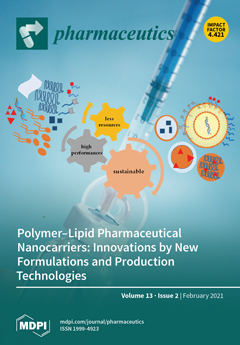Epidermal growth factor receptor (EGFR) is overexpressed in many malignancies. EGFR-targeted therapy extends survival of patients with disseminated cancers. Radionuclide molecular imaging of EGFR expression would make EGFR-directed treatment more personalized and therefore more efficient. A previous study demonstrated that affibody molecule [
68Ga]Ga-DFO-ZEGFR:2377 permits specific positron-emission tomography (PET) imaging of EGFR expression in xenografts at 3 h after injection. We anticipated that imaging at 24 h after injection would provide higher contrast, but this is prevented by the short half-life of
68Ga (67.6 min). Here, we therefore tested the hypothesis that the use of the non-conventional long-lived positron emitter
66Ga (T
1/2 = 9.49 h, β
+ = 56.5%) would permit imaging with higher contrast.
66Ga was produced by the
66Zn(p,n)
66Ga nuclear reaction and DFO-ZEGFR:2377 was efficiently labelled with
66Ga with preserved binding specificity in vitro and in vivo. At 24 h after injection, [
66Ga]Ga-DFO-ZEGFR:2377 provided 3.9-fold higher tumor-to-blood ratio and 2.3-fold higher tumor-to-liver ratio than [
68Ga]Ga-DFO-ZEGFR:2377 at 3 h after injection. At the same time point, [
66Ga]Ga-DFO-ZEGFR:2377 provided 1.8-fold higher tumor-to-blood ratio, 3-fold higher tumor-to-liver ratio, 1.9-fold higher tumor-to-muscle ratio and 2.3-fold higher tumor-to-bone ratio than [
89Zr]Zr-DFO-ZEGFR:2377. Biodistribution data were confirmed by whole body PET combined with magnetic resonance imaging (PET/MRI). The use of the positron emitter
66Ga for labelling of DFO-ZEGFR:2377 permits PET imaging of EGFR expression at 24 h after injection and improves imaging contrast.
Full article






